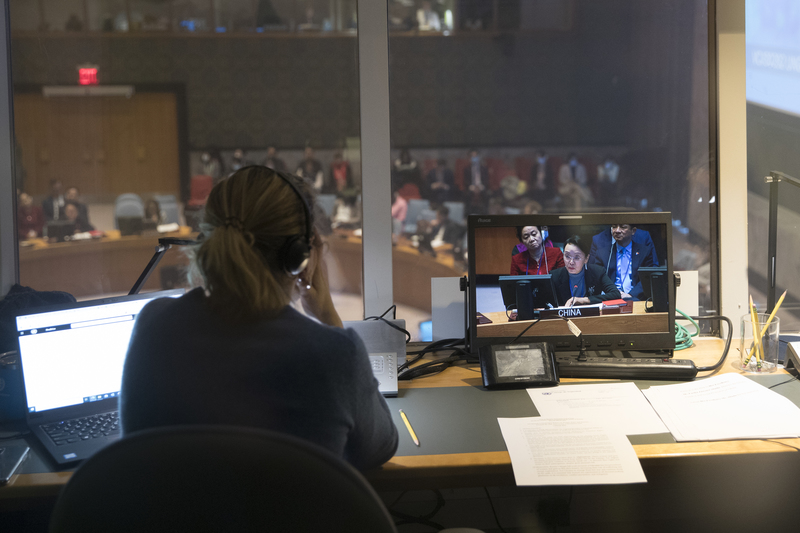In a world where global communication is instantaneous, the demand for accurate and efficient language interpretation has never been higher. Human interpreters have long been the backbone of cross-lingual interactions, bridging cultural and linguistic divides in diplomacy, business, and everyday life. Yet, the rise of machine translation tools like DeepL, Microsoft Translator, and Google Translate has sparked a transformation in the field. Far from replacing human interpreters, these technologies are becoming powerful allies, enhancing productivity, improving accuracy, and addressing logistical challenges. This synergy between human expertise and machine efficiency is reshaping interpretation while raising important questions about job displacement and quality control.
The Role of Machine Translation in Interpretation
Machine translation tools have evolved dramatically, leveraging neural networks and vast datasets to produce translations that are increasingly fluent and context-aware. For interpreters, these tools serve as indispensable aids in preparation and real-time work. Before a conference or meeting, interpreters often use platforms like DeepL to review documents, speeches, or technical glossaries, ensuring familiarity with specialized terminology. During live sessions, portable devices with apps like Microsoft Translator can provide quick reference for unfamiliar phrases or jargon, allowing interpreters to maintain flow without pausing for manual lookups.
Consider a simultaneous interpreter at a medical conference. While their training equips them to handle complex terminology, a tool like Google Translate’s real-time transcription feature can capture and translate a speaker’s offhand remark in a less familiar dialect, giving the interpreter a fallback to confirm accuracy. This collaboration reduces cognitive load, enabling interpreters to focus on nuance, tone, and cultural context—elements machines cannot replicate.
Enhancing Productivity, Not Replacing Expertise
The integration of machine translation doesn’t diminish the interpreter’s role; it amplifies it. Interpreters bring irreplaceable skills: cultural sensitivity, emotional intelligence, and the ability to adapt to unpredictable contexts. A machine might translate a Spanish idiom like “estar en las nubes” as “to be in the clouds,” but an interpreter knows to convey it as “daydreaming” to capture its meaning for an English audience. Machine tools provide raw output, but interpreters refine it, ensuring communication resonates with human authenticity.
Productivity gains are tangible. In settings like legal depositions or community interpreting, where time is critical, tools like iTranslate can pre-process documents or transcribe conversations, allowing interpreters to prioritize active listening and delivery. Freelance interpreters, in particular, benefit from these efficiencies, handling higher workloads without compromising quality. For instance, an interpreter working on a multilingual project might use DeepL to draft initial translations of written materials, freeing up time to focus on live sessions.
Addressing Concerns About Job Displacement
Despite these benefits, fears of job displacement persist. The accessibility of machine translation apps has led some to question whether human interpreters are necessary, especially for low-stakes interactions. In 2023, a study by the Localization Industry Standards Association noted that 30% of language professionals worried about automation reducing demand for their services. Yet, the reality is more nuanced. Machine translation excels in repetitive, text-based tasks but struggles with high-stakes, context-driven scenarios like diplomatic negotiations or courtroom interpreting, where errors can have serious consequences.
Rather than replacing interpreters, machine translation is shifting their roles. Demand is growing for interpreters who can leverage technology, combining traditional skills with digital fluency. Organizations like the United Nations and international NGOs continue to rely on human interpreters for their ability to navigate cultural subtleties and ethical considerations. Meanwhile, new opportunities are emerging in post-editing machine translations or training AI models, ensuring interpreters remain integral to the language services ecosystem.
Ensuring Quality Control
The reliance on machine translation also raises concerns about quality. While tools like DeepL boast impressive accuracy, they can misinterpret context or produce awkward phrasing. For example, Microsoft Translator might render a formal Japanese greeting as overly casual in English, risking miscommunication. Interpreters act as quality gatekeepers, cross-checking machine output against their expertise to prevent errors.
To maintain standards, many interpreters advocate for clear protocols. Professional associations, such as the International Association of Conference Interpreters, recommend training programs that teach interpreters to evaluate and refine machine translations. Some agencies have implemented hybrid workflows where interpreters review machine-generated drafts before final delivery. These measures ensure that technology enhances, rather than undermines, the quality of communication.
The Future of Human-Machine Collaboration
Looking ahead, the partnership between interpreters and machine translation tools promises to deepen. Advances in AI, such as real-time contextual analysis and improved speech recognition, will make these tools even more reliable. Yet, the human element will remain indispensable. Interpreters are not just language processors; they are cultural mediators, trusted to convey intent and emotion across borders. As technology handles routine tasks, interpreters can focus on high-value contributions, such as fostering trust in sensitive negotiations or amplifying marginalized voices in community settings.
The key to a successful future lies in balance. Training programs must evolve to equip interpreters with tech skills, while organizations should invest in ethical AI development to prioritize accuracy and inclusivity. By embracing this collaboration, the interpretation field can meet growing global demands without sacrificing the human touch that defines it.
Machine translation tools are not rivals to human interpreters but powerful complements, streamlining workflows and enhancing accuracy. While concerns about job displacement and quality control are valid, they are being addressed through training, protocols, and a focus on human expertise. As interpreters and technology continue to evolve together, their synergy will ensure that global communication remains precise, empathetic, and profoundly human. In this dynamic landscape, interpreters are not being replaced—they are being empowered to shine brighter than ever.











